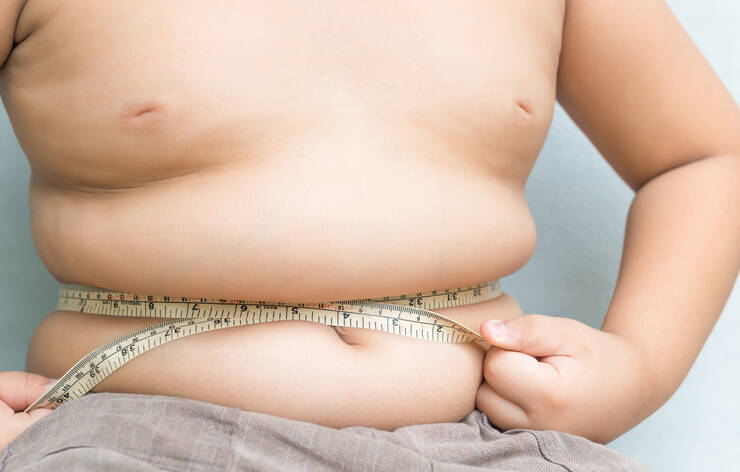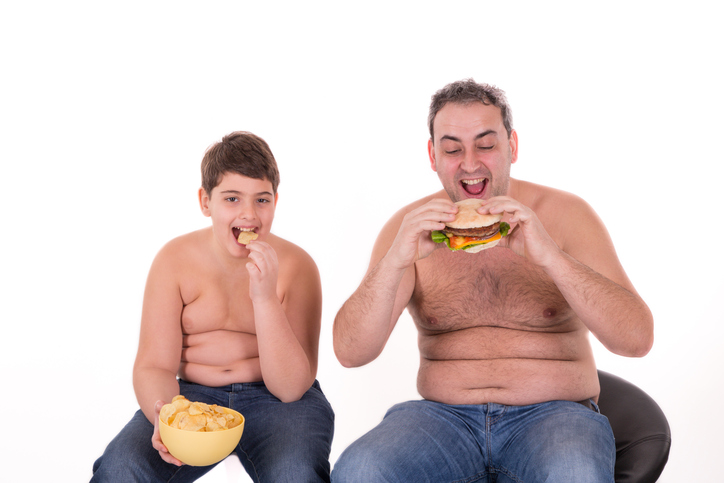Overweight and obesity in children, adolescents and young adults. What can be done about it?

Overweight and obesity are hot topics. Obesity is the most common metabolic disease in the world today. As in adults, it is a problem in children. If it is present in childhood, it is highly likely to be present in adulthood. It significantly increases the risk of morbidity.
Article content
You ask:
What is overweight and obesity?
What can we do to prevent it in our children?
What can we do to prevent children from having unnecessary health problems in the future?
Excess adipose tissue does not just create a visible problem. It has a negative impact on the whole body. The cause of obesity may be a genetic or hormonal disorder. However, this occurs less frequently.

The main cause of obesity is, of course, an imbalance in energy intake and expenditure.
This statement is overlaid by improper eating habits and lack of exercise.
In research, it has been found that parental obesity is one of the preconditions for a child to develop it. Especially if both parents are obese. If one parent is obese, the risk is threefold, and rises tenfold for both parents.
The child is greatly influenced by the parents' eating habits. In addition, a sedentary lifestyle is present. And the media is a big contributing factor these days.
The serious risks of childhood obesity
The main cause for concern is the development of complications. The negative impact of high weight is felt throughout the body. If it persists into adulthood, the risk is high.

The main impacts of obesity are on:
- disturbances in the metabolism of fats and sugars
- fat deposition in the liver, disruption of its structure and impaired function
- Type II diabetes
- cardiovascular disease
- loss of vascular elasticity
- high blood pressure
- chronic diseases of the respiratory system, sleep apnoea
- gallstones
- strain on the musculoskeletal system and its deformities
- disorders of the reproductive system, maturation, infertility in adulthood
- polycystic ovary syndrome
- increases the risk of cancer in adulthood
- psychological disorders
How is the diagnosis of obesity established?
Also in the childhood period, the calculation of BMI (body mass index) is used to determine obesity. The formula for the calculation is: weight in kg/height inm2. In children, however, the assessment is age-related.
 A BMI percentile chart is used to accurately assess BMI. At the 90th percentile of BMI, overweight and obesity is above the 97th percentile.
A BMI percentile chart is used to accurately assess BMI. At the 90th percentile of BMI, overweight and obesity is above the 97th percentile.
Other methods rely on measurements of subcutaneous fat, waist circumference, hips. Bioelectrical impedance (BIA) or dual X-ray absorptiometry (DXA) is also used.
About BMI also in the magazine article
+ calculation with BMI calculator.
Prevention and treatment are important
Prevention plays an important role.
Of course, it is easier to prevent obesity than to treat it at a developed stage. But if overweight or obesity is already present, controlled treatment by a doctor is necessary.
A paediatrician, a dietician, a psychologist and a personal sports trainer are involved in the treatment of obesity. In some cases, initial hospital treatment is appropriate for children. Later, spa treatment is also beneficial.
Read also the following articles:
How to lead children to a healthy lifestyle
How to lose weight and fat
Diet and habits
Diet and eating habits play an important role.
It is best to spread meals into smaller portions throughout the day, up to five portions. Regular food intake has an important role and influence on the child's eating habits and also for the body's habits.
The diet should have an appropriate composition and be rational with all ingredients represented.
Dieting is not intended to bring about a rapid and short-term reduction in weight. On the contrary, weight is reduced gradually. What is important is the long-term maintenance of normal weight values.
In this case, a reduction in the risk of complications and serious diseases can be expected. Rapid weight loss often results in regaining weight, which is known as the yo-yo effect.
Adequate drinking is also important. Drinking pure water is best. In the case of juices, fresh juices that are diluted with water are suitable. It is advisable to drink them during the day, not in the evening. Sweetened bottled waters are not suitable.
Movement is important for children

Prevention as well as treatment also includes adequate, increased physical activity and a reduction in passive living. In some cases, the assistance of a personal trainer is best.
Physical activity daily, lasting at least two hours. It is necessary to take into account the load on the musculoskeletal system, joints. Swimming, cycling, initially longer walks, hiking are the most suitable.
Passive behaviour should be avoided. Outdoor exercise is suitable, in all weathers. It is necessary to lead the child to activity, sports. Limitation of sedentary lifestyle behind the computer and watching TV.
Family support
The participation of the whole family is necessary in the treatment.
The family must be involved in changing eating habits and in guiding the child to physical activities. Last but not least, psychological support for the child is also important, which can prevent serious psychological difficulties.

Research by British scientists confirms that if a child is obese in his or her 11th year, obesity will persist into adulthood.
It is important that we encourage children to lead a healthy lifestyle from an early age. Physical activity, good eating habits, eating fruit and vegetables. All this has an impact on their healthy physical, but also mental development.
Video about obesity in children
Interesting resources
Related










